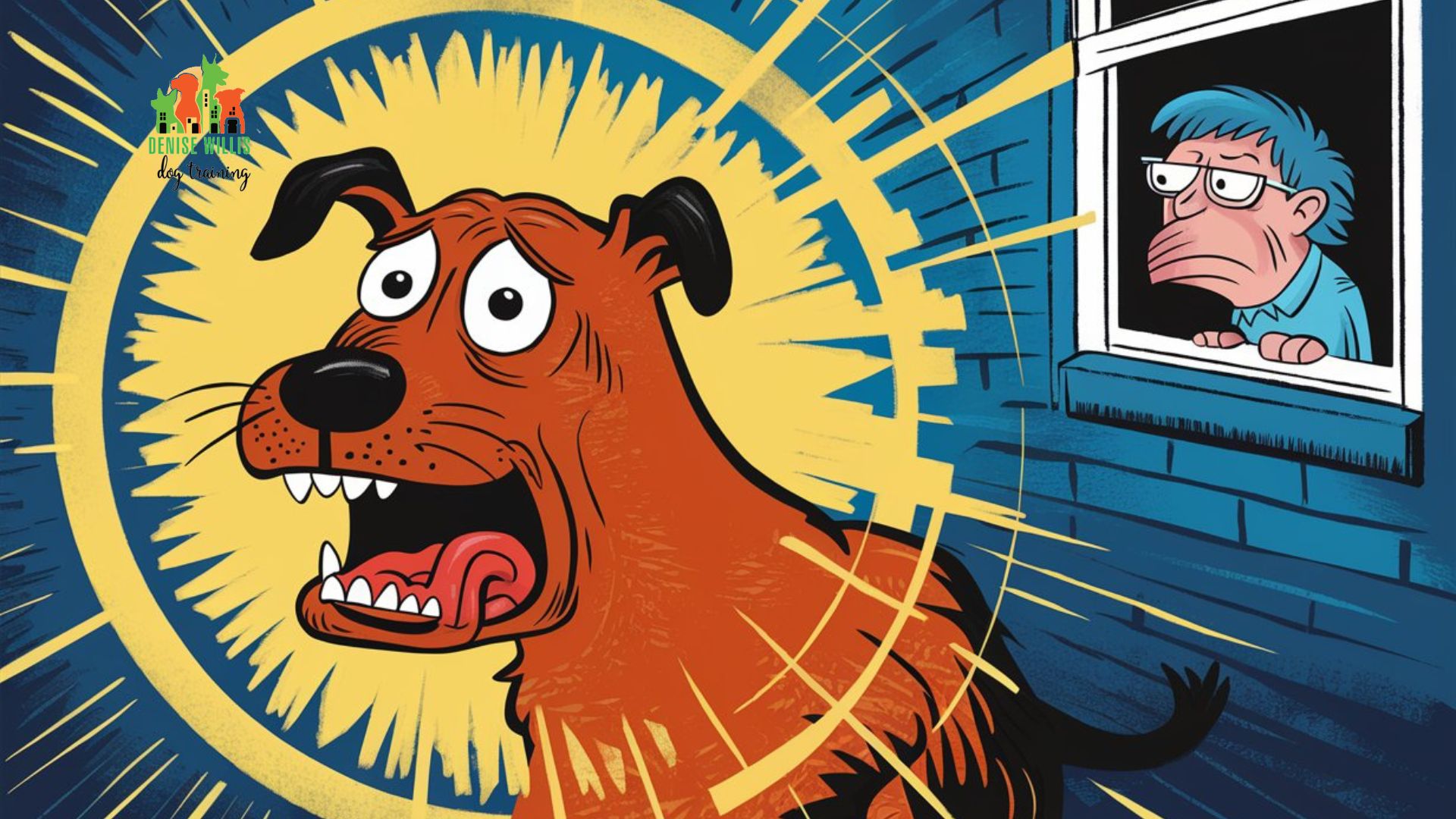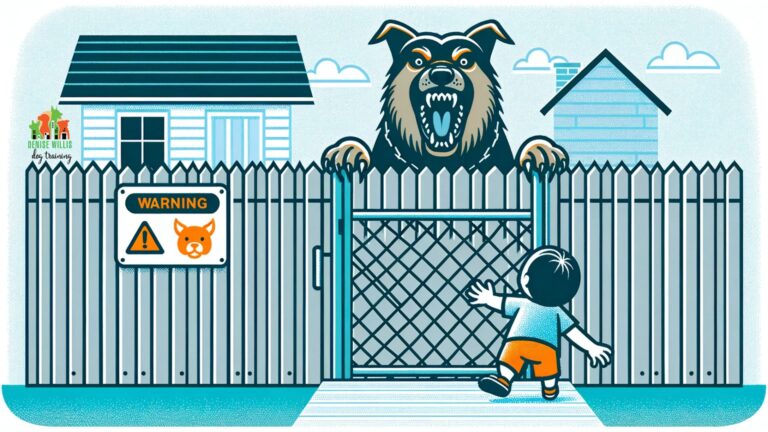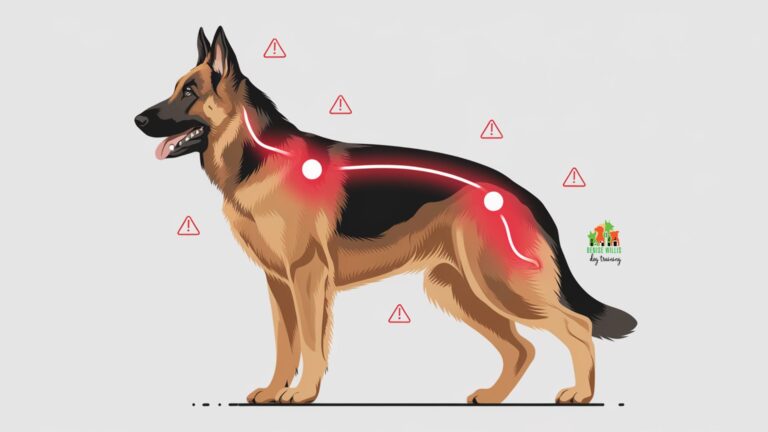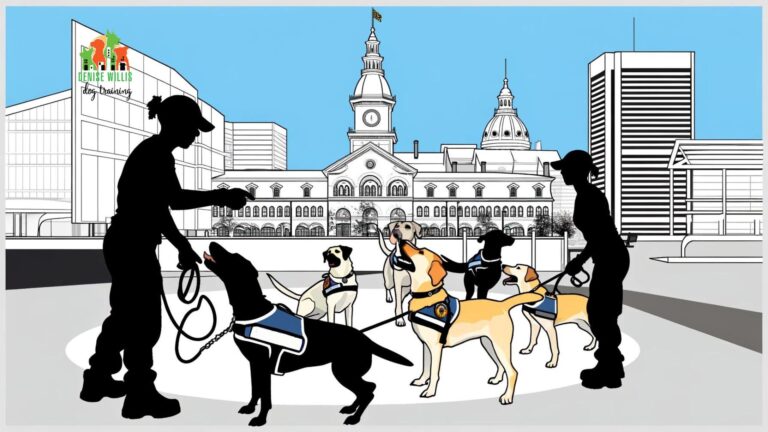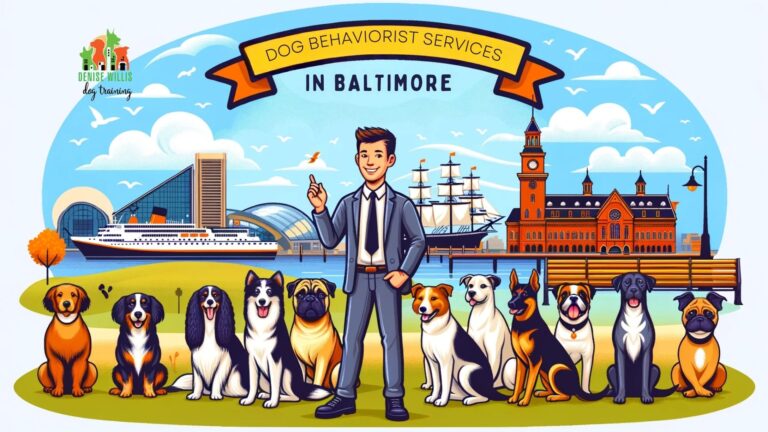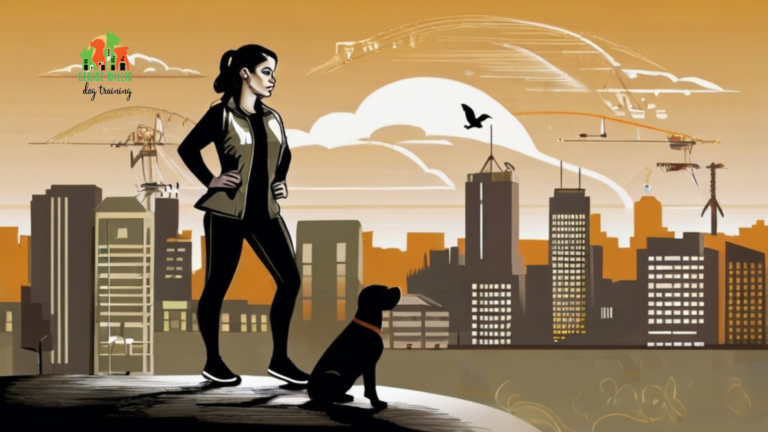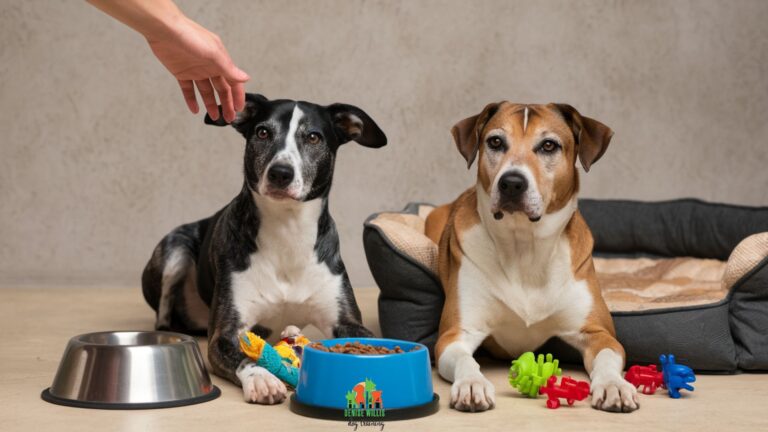7 Surprising Signs Your Dog Has Separation Anxiety (and What to Do About It)
📍 Service Area Notice: DW Dog Training provides in-person training services exclusively in the Greater Baltimore area. While our blog content is designed to help dog owners internationally, our hands-on training services are locally focused. For readers outside our service area, we hope you find value in our articles and welcome you to reach out with questions!
Remember Ridgely, the terrier mix with a need for speed who stayed with us for off-leash training? Turns out, she wasn’t just a track star; she was a separation anxiety champion. It wasn’t immediately obvious, but her subtle clues led us to a lightbulb moment: She was a wreck when left alone. Sound familiar?
If your furry friend transforms into a barking, chewing, potty-breaking Houdini the moment you step out the door, you’re not alone. Separation anxiety is more common than you might think, and it’s a real struggle for both dogs and their desperate owners. But here’s the good news: it’s not a life sentence. With a little knowledge and a lot of patience, you and your pup can conquer this challenge together.
So, what are the sneaky signs that your dog might be suffering from separation anxiety? Let’s take a look.
Sign #1: Your Dog Sounds Like a Broken Record (But with More Barking)
Ever come home to complaints from your neighbors about your dog’s operatic solos? Excessive barking, howling, or whining when left alone is a classic sign of separation anxiety. It’s your dog’s way of saying, “Hey, I’m freaking out here!” Besides annoying the heck out of everyone, this can lead to some serious consequences like fines, eviction, or even doggy vocal cord damage.
One client’s story really drives this point home. Jane had a rescue pup named Buster who would start barking the second she left for work. At first, it was just a few woofs, but over time it escalated into full-blown arias that had the whole neighborhood singing along (unwillingly, of course). After multiple noise complaints and a stern warning from the landlord, Jane knew she had to address Buster’s separation anxiety before they found themselves out on the street.
Sign #2: Your House Looks Like a War Zone (Without the Cool Explosions)
If your dog turns into a demolition expert when left alone, it’s not because they’re practicing for a home renovation show. This destructive behavior often focuses on escape routes like doors and windows. We’re talking chewed door frames, scratched walls, shredded curtains – the works. Not only is this costly to repair, but it’s heartbreaking to see your home (and your dog) in distress.
I’ll never forget the time I walked into a client’s apartment to find stuffing everywhere. And I mean everywhere – on the couch, the floors, even stuck to the walls! Their pup, a sweet golden retriever named Buddy, had gone to town on every pillowcase in sight. The poor guy was so anxious that he’d turned the whole place into a blizzard of fluff. It was equal parts impressive and heartbreaking.
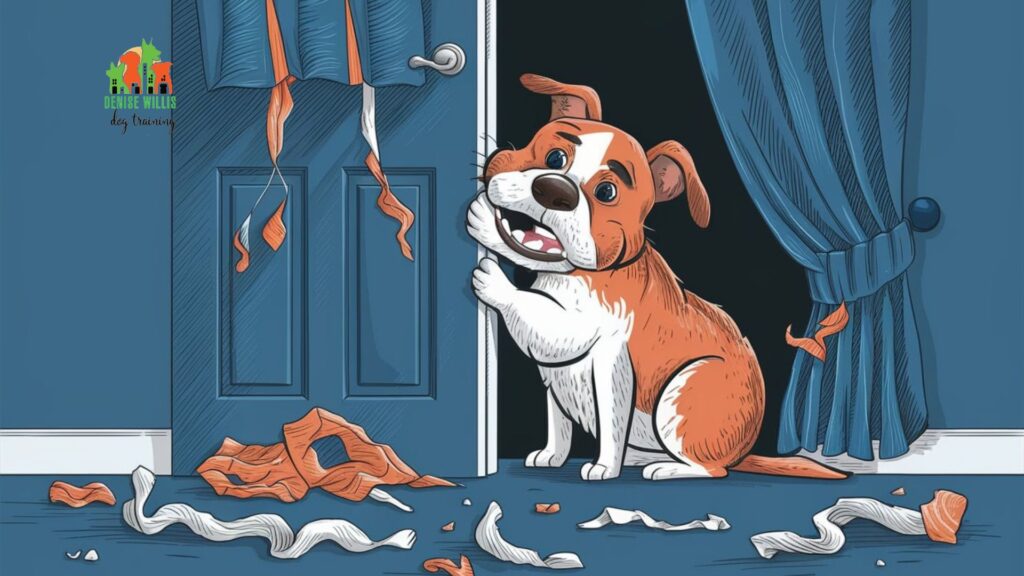
Sign #3: Your House-Trained Dog Suddenly Forgets Potty Etiquette
Even the most well-trained dog can have accidents when stressed. If your usually reliable pup starts leaving you “presents” around the house when you’re gone, it’s not a sign of rebellion. It’s more likely a desperate attempt to self-soothe their anxiety. Trust me, I’ve seen (and smelled) it all. It’s not fun for anyone involved.
Take Milo, a French bulldog with impeccable bathroom manners – until his owners went on vacation, that is. While they were away, their pet sitter found multiple “souvenirs” awaiting them each day. Poor Milo was so anxious without his favorite humans that he just couldn’t hold it. It’s a good thing the sitter was a pro and understood it was just Milo’s way of crying out for help.
Sign #4: Your Dog Clings to You Like Velcro (The Extra-Sticky Kind)
Does your dog follow you around like a shadow, panic when you grab your keys, or try to squeeze through the door with you? This clinginess is a hallmark of separation anxiety. It’s like they’re saying, “Don’t leave me, I can’t handle it!” One of my clients, bless her heart, couldn’t even go to the bathroom without her pup having a meltdown. Talk about a challenge!
Olive, an adorable mutt, took velcro dog to a whole new level. Her mom couldn’t take two steps without Olive planting herself between her feet. Mealtimes were a circus, with Olive gluing herself to her mom’s lap and inhaling the food off her plate. And don’t even get me started on the bedtime routine – an hour-long process of prying Olive off her mom’s body so she could actually get some sleep! It was a constant battle of wiggly affection.
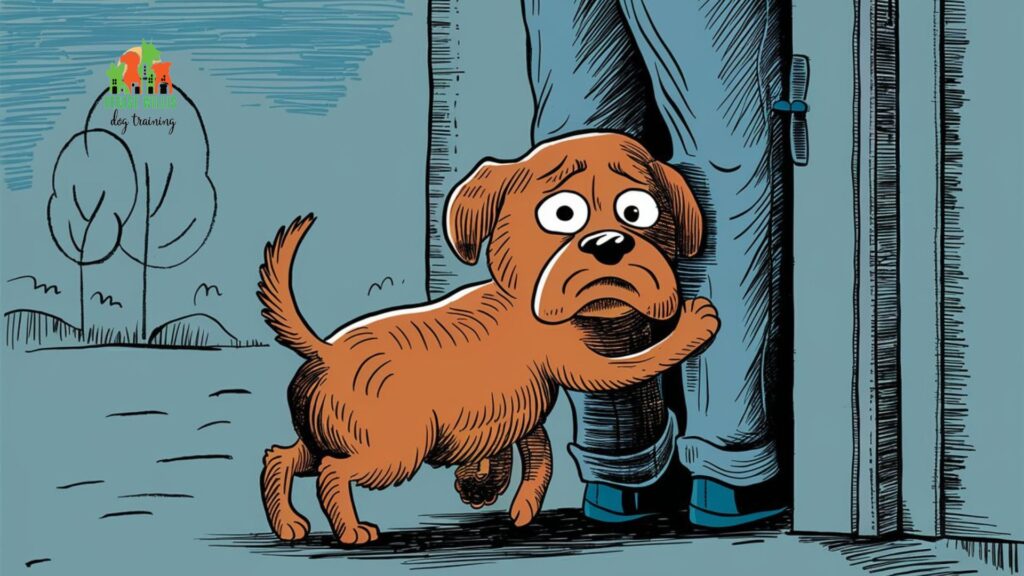
Sign #5: Your Dog Is a Self-Harm Enthusiast (Not in a Good Way)
This one’s tough to talk about, but it’s important. Dogs with severe separation anxiety can injure themselves trying to escape or cope with their stress. We’re talking excessive licking, chewing, scratching, or even trying to break through windows. These injuries can range from minor to severe, and they’re always heartbreaking.
I worked with a German shepherd named Gunner whose anxiety led him to chew his own tail until it was a bloody stump. It was clear he wasn’t doing it to be spiteful – he was just so incredibly stressed when left alone that he’d resort to self-mutilation. Seeing a dog harm himself is one of the most gut-wrenching things in this line of work. With Gunner, we had to take extreme measures to keep him safe, like bitter apple spray and cone collars, until we could get his anxiety under control.
Sign #6: Training Feels Like Running a Marathon (Uphill, in the Snow)
Teaching a dog with separation anxiety new tricks isn’t a walk in the park. It takes time, patience, and consistency. It’s like trying to teach a hyperactive toddler algebra. It’s frustrating, I know, but don’t give up! With the right approach, even the most anxious pup can learn to relax.
Percy was a prime example of this challenge. An adorably twitchy Jack Russell terrier, he couldn’t focus on anything when his mom was home, let alone when she left. Training sessions would start out great – he’d nail “sit,” “stay,” you name it. But the second Mom stepped out of sight, it was like his little brain fizzled out. He’d start panting, whining, and completely forgetting everything we’d practiced. Making progress with Percy required clockwork consistency and the patience of a saint. Luckily, his mom was a real trooper!
Sign #7: Professional Help Costs a Pretty Penny (But It’s Worth It)
Let’s be real, hiring an animal behaviorist or trainer isn’t cheap. But for severe cases of separation anxiety, it can be the best investment you make for both you and your dog. Remember, you’re not in this alone. There are experts who can help you tailor a plan specifically for your pup.
When Maggie’s family reached out to me about her debilitating separation anxiety, they were at their wits’ end. They’d tried everything from doggy daycare to calming supplements, but nothing could ease Maggie’s panic when left alone. Although hiring a professional behavior consultant was a significant expense for them, it ended up being a lifesaver. With my guidance tailored to Maggie’s unique needs, they were finally able to get her anxiety under control and give the whole family peace of mind.
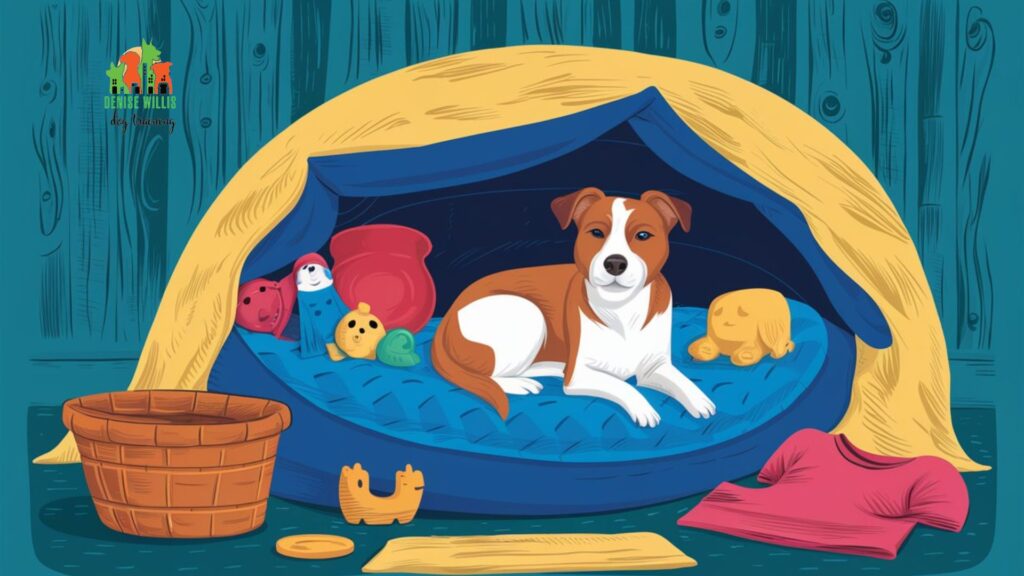
What to Do About It: Your Separation Anxiety Survival Guide
Okay, so you’ve seen the signs, and you’re thinking, “Now what?” Don’t panic! There are steps you can take to help your furry friend cope.
- Create a Safe Haven: Designate a cozy, comfortable space for your dog where they feel secure. Fill it with familiar toys, blankets, and maybe even an old t-shirt with your scent. This cozy cubby can be a retreat when they’re feeling overwhelmed.
- Baby Steps: Don’t just disappear for hours on end. Start by leaving for short periods and gradually increase the time you’re gone. Reinforce their confidence that you’ll always come back.
- Positive Vibes Only: Make departures and arrivals low-key. No big emotional goodbyes or over-the-top greetings. Staying calm helps your pup realize it’s no big deal.
- Distraction is Key: Leave your dog with puzzle toys or long-lasting chews to keep them occupied. A bored, anxious mind will quickly spiral.
- Call in the Pros: If you’re struggling, don’t hesitate to seek help from a certified trainer or behaviorist specializing in separation anxiety. They have a toolbox of techniques to get your pup’s anxiety under control.
- Be Patient: Overcoming separation anxiety takes time and consistency. There may be setbacks and frustrating days, but don’t give up. Relapses happen, but if you stick with the training plan your dog will make progress.
- Consider Medications: For severe cases, your vet may recommend anti-anxiety medications to take the edge off while you work on behavior modification. Meds alone aren’t a cure, but can provide helpful support.
- Make It a Family Affair: If there are multiple people in your dog’s life, everyone needs to be on the same page with the training plan. Consistency from all humans is key.
- Hire a Pet Sitter or Walker: Sometimes just having another person check in at midday can provide much-needed mental relief for an anxious pup. Rates are often lower than in doggy daycare.
- Be Realistic: Very few dogs achieve being 100% anxiety-free when alone. The goal is to manage it to a level you can live with through proper training and desensitization.
Key Takeaways
- Separation anxiety manifests in different ways like barking, destruction, accidents, clinginess, and even self-harm. It’s a serious condition that needs to be addressed.
- The root cause is your dog’s panic response when separated from their loved ones. It’s not spite or disobedience – they’re terribly distressed.
- You can overcome it through proper desensitization training, creating a anxiety-free safe space, introducing positive distractions, and staying consistent.
- Don’t be afraid to call in professionals if you need help. Separation anxiety cases often require expert-level behavior modification.
- With patience and the right plan, you can help your anxious pup gain more confidence and learn to feel secure when left alone.
Frequently Asked Questions About Separation Anxiety In Dogs
- Is it separation anxiety or boredom? The signs can seem similar on the surface, but boredom is more likely to result in general restlessness and mischief like chewing on random items. Separation anxiety behaviors are specifically panic-fueled when you depart – drastic barking, eliminating indoors, attempting to escape, etc.
- How long will treatment take? There’s no set timeline, as every dog’s situation is unique. It depends on the severity of the anxiety, your dog’s age, past experiences, and how diligently you work the training plan. Be prepared for it to take weeks or months rather than days.
- What are some effective training techniques? The gold standards are desensitization, where you gradually accustom your dog to being alone, and counterconditioning, where you change their emotional response by pairing being alone with good things like treats or toys. Professional behaviorists use specialized protocols.
- When should I seek professional help? If you’ve tried basic training techniques for a few weeks with no progress, or if your dog’s anxiety is extreme (injuring themselves, excessive house soiling), don’t wait – get professional guidance before it escalates further. Severe cases need expert intervention.
Final Thoughts
If your furry friend is showing any of these separation anxiety signs, you don’t have to tough it out alone. DW Dog Training has helped hundreds of dogs and owners overcome this heartbreaking condition.
Contact us today for a free consultation. Our certified separation anxiety trainers will evaluate your situation and develop a customized plan to help your best friend gain confidence and feel calm when left alone.
You and your pup deserve to live anxiety-free. Investing in professional training now can save your home, your sanity, and most importantly, strengthen that special bond with your four-legged family member. Reach out today, and let’s get your dog’s separation anxiety under control for good.

